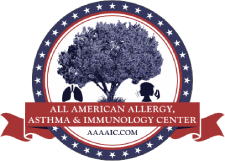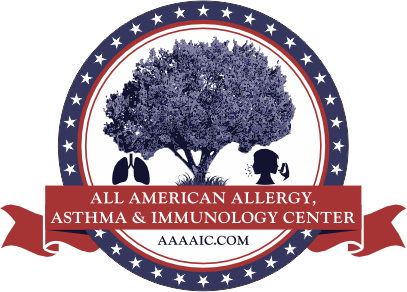Immunodeficiencies:
Background – Primary immunodeficiencies are rare, chronic disorders in which part of the body’s immune system is missing and/or functions improperly. It can be hereditary or genetic, meaning that you are born with it or novel. Primary immunodeficiency can target specific and/or multiple organs, glands, cells, and tissues, leading to a wide variety of different defects, such as heart defects, altered facial features, stunted growth, malignancies and autoimmune disorders. However, most of them have recurrent infections that involve the same organ system and or require extended treatment regimens. There are over 300 different primary immunodeficiency disorders. Specific primary immunodeficiency disorders include:
- X-linked agammaglobulinemia (XLA)
- Common variable immunodeficiency (CVID)
- Severe combined immunodeficiency (SCID)
- Chronic Granulomatous Disease (CGD)
- Ataxia-telangiectasia
- Complement deficiencies
- Job’s syndrome
Acquired immunodeficiency, also called secondary immunodeficiency, can occur when something weakens your immune system. Severe burns, malnutrition, drug abuse, HIV, and certain medications like chemotherapy, biologics or systemic steroids can cause acquired immunodeficiency. Acquired immunodeficiency disorders include:
- AIDS (Acquired Immunodeficiency Syndrome)
- Cancers of the immune system
- Immune-complex diseases, like viral hepatitis
- Multiple myeloma (cancer of the plasma cells, which produce antibodies)
- Inflammatory Bowel Disease
How it works/Pathophysiology – PID is caused by either missing or dysfunctional parts of the immune system. This can manifest as defects, such as heart defects, altered facial features, stunted growth, malignancies, autoimmune disorders and or recurrent infections.
Symptoms –
- Poor growth or loss of weight
- Recurrent pneumonia, ear infections or sinusitis (i.e >2 pneumonia per decade; >4 ear infections per year; >4 sinus infections per year)
- Recurrent gastrointestinal infections
- Multiple courses of antibiotics or IV antibiotics necessary to clear infections
- Recurrent deep abscesses of the organs or skin
- A family history of primary immunodeficiency
- Swollen lymph glands or an enlarged spleen
- Autoimmune disease
- Musculoskeletal defects
Diagnostic Testing – In -Vitro testing of whole blood draw at a local lab for which the whole blood is analyzed for the adequate numbers of immune system cells and their functionality. Basic organ labs are also analyzed. Patients are also screened for causes of acquired immunodeficiency. Prenatal testing is done by taking samples of amniotic fluid, blood or cells from tissue that will become the placenta; or testing for a genetic defect in DNA. About 1.5 wks later, the allergy provider will discuss the results and overall interpretation.
Therapies:
Bone marrow, stem cell, or thymus transplantation – This is done through a transplant team and will require immunomodulating therapy to enable the immune system to accept the graft.
Immunoglobulin replacement – Immunoglobulin (replacement therapy (IgG) is one of the most common therapies prescribed for primary immunodeficiency diseases. Though it does not cure immunodeficiency, it does provide the body with more immunoglobulins (antibodies) to fight off infections. Routine treatment with immunoglobulin replacement therapy can treat existing infections, prevent new infections from occurring, and prevent long-term organ damage from chronic infections. There are two different types of immunoglobulin replacement therapy: intravenous immunoglobulin (IVIG) and subcutaneous immunoglobulin (SCIg)
Gene therapy – This therapy uses autologous stem cell transplant to deliver stem cells that do not have missing or malfunctioning gene (s) that is causes the PID.
Antibiotics to manage and prevent infections – Antibiotics are prescribed to either have on hand as needed or on a daily basis to reduce the risk of infection in patients with known PID. Due to bacterial resistance and side effects, this approach is often temporary.
Interferon Gamma – IFN-gamma stimulates superoxide release which is defective Chronic Granulomatous Disease patients. It reduces the overall infection burden for these patients.
Mast Cell Disorders:
Background – Mast cells are immune system cells that live in the bone marrow and in body tissues, internal and external, such as the gastrointestinal tract, the lining of the airway, and the skin. Mast cell disorders are caused by the proliferation and accumulation of genetically altered mast cells and/or the inappropriate release of mast cell mediators. The three major forms of mast cell diseases are mastocytosis, mast cell activation syndrome (MCAS), and Hereditary Alpha tryptasemia (HAT). Mast cell diseases can cause tremendous suffering and disability due to symptomatology from daily mast cell mediator release, and/or symptoms arising from infiltration and accumulation of mast cells in major organ systems. This disorder is rare but is underdiagnosed due to its complexity and array of symptoms.
How it works/Pathophysiology – Mast cells can be activated through both IgE and non-IgE-related mechanisms, resulting in the release of mediators, such as tryptase, histamine, heparin, leukotrienes and prostaglandins. Whether the patient has Mastocytosis (extra mast cells) or Mast cell activation syndrome (mast cells release contents easily), these patients have frequent and severe release of mast cell mediators. The common triggers include:
- Heat, cold or sudden temperature changes
- Stress: emotional, physical, including pain, or environmental (i.e., weather changes, pollution, pollen, pet dander, etc.)
- Exercise
- Fatigue
- Food or beverages, including alcohol
- Drugs (opioids, NSAIDs, antibiotics and some local anesthetics) and contrast dyes
- Natural odors, chemical odors, perfumes and scents
- Venoms (bee, wasp, mixed vespids, spiders, fire ants, jelly fish, snakes, biting insects, such as flies, mosquitos and fleas, etc.)
- Infections (viral, bacterial or fungal)
- Mechanical irritation, friction, vibration
- Sun/sunlight
Symptoms –
- Flushing of the face, neck, and chest
- Itching, +/- rash
- Hives, skin rashes
- Angioedema (swelling)
- Nasal itching and congestion
- Wheezing and shortness of breath
- Throat itching and swelling
- Headache and/or brain fog, cognitive dysfunction, anxiety, depression
- Diarrhea, nausea, vomiting, abdominal pain, bloating, gastroesophageal reflux disease (GERD)
- Bone/muscle pain, osteosclerosis, osteopenia, osteoporosis
- Light-headedness, syncope/fainting
- Rapid heart rate, chest pain
- Low blood pressure, high blood pressure at the start of a reaction, blood pressure instability
- Uterine cramps or bleeding
Diagnostic Testing – In-Vitro testing of whole blood for mutation associated with mast cell proliferation (KIT D816V mutation), tryptase levels, levels of metabolites of mast cell degranulation, basic organ labs, screen for connective tissue disease, infection, malignancies, metabolic derangements and endocrinopathies.
Therapies:
Avoidance of triggers – Strict avoidance and control of triggers that initiate mast cell degranulation is very effective whether it is stinging insects, foods, drugs, beverages, stress, anxiety, extreme temperatures, strong odors, fatigue etc.
Epinephrine – All patients with mast cell disorders must always have an EPIPEN on hand. The EPIPEN can temporarily reverse some of the life-threatening symptoms. It should be always with the patient.
Antihistamines – Antihistamines work by blocking histamine receptors on tissues thus eliminating and or reducing the influence of histamine on the body. Histamine is the chief inflammatory mediator that mast cells contain. Antihistamines come in various strengths, dosages, and types. They can be an effective preventative and temporizing agent for mast cell degranulation. Your allergy provider can work with you to find the most effective and suitable regimen.
Antileukotriene Agents – These agents act by disrupting the activation of leukotriene, which is one of the inflammatory mediators that are released by mast cells. They can be effective in combination with antihistamines and/or steroids.
Corticosteroids – Corticosteroids or synthetic steroids agents that turn down the overall immune repose despite the trigger by preventing the conversion of phospholipids into arachidonic acid. It is often used for mast cell activation in the acute setting. It is administered for a few days up to several weeks. Due to its side effect profile, longer courses are tapered down overtime.
Xolair (Omalizumab) – Xolair is a humanized monoclonal antibody that is administered by subcutaneous injection. It works by preventing the “allergy” inflammatory by binding free IgE antibodies (this is the antibody that triggers allergies) and by blocking certain receptors on inflammatory cells (i.e mast cells, basophils). Xolair is very effective and has a relatively small adverse effect profile. Although it is not FDA approved for treatment of mast cell disorders, there are many small powered studies that show it can be effective.
Gleevec (Imatinib) – Gleevec is a chemotherapy medication that is used for aggressive systemic mastocytosis.
Cromylyn (Gastrocrom) – Cromolyn is a mast cell stabilizer that has been shown to help patients with gastrointestinal and neurologic effects of mast cell disorders.
Surveillance Labs/Imaging – Patients with mast cell disorders undergo routine labs and imaging to ensure no involvement of major organ systems.
THE MAST CELL DISEASE SOCIETY: https://tmsforacure.org/

